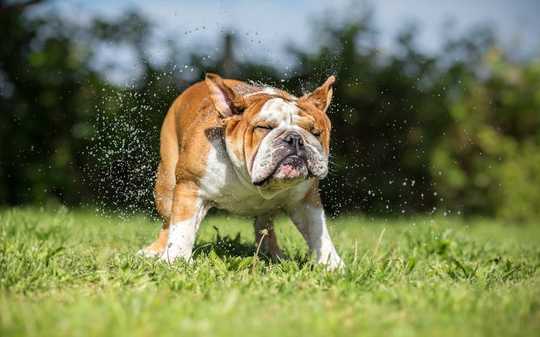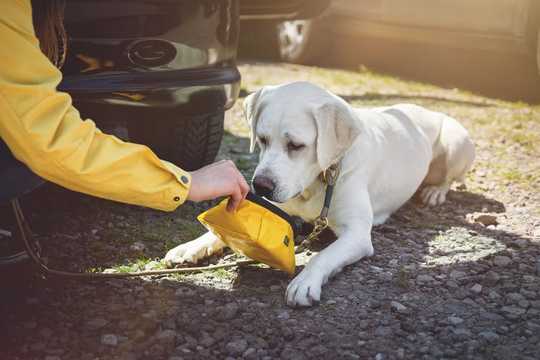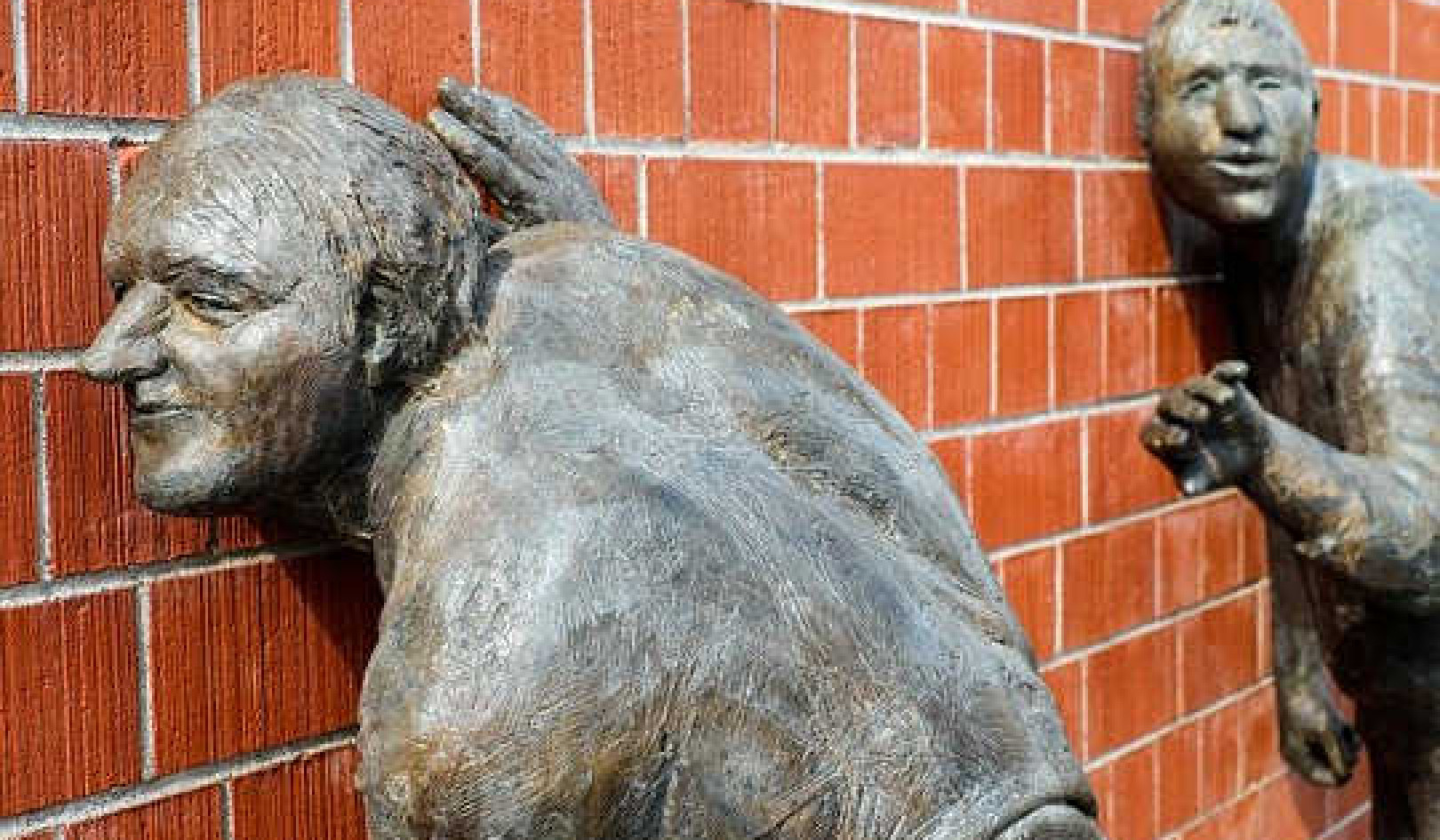 Hot dog. Shutterstock
Hot dog. Shutterstock
Summer is a great time to get out and about with your dog. But dogs don’t tolerate the heat as well as their owners. When people get hot they start to sweat, but dogs are only able to do this through the pads on their paws. Dogs instead rely on panting as their main method of cooling.
But panting can only control body temperature up to a point. As temperatures and humidity rise, panting is no longer able to cool the dog. This leads to an increased risk of heatstroke in dogs, which is potentially fatal. It’s worth remembering that it can take around two months for a dog to acclimatise to high temperatures so it is important not to become complacent.
What is heatstroke?
Like humans, dogs can develop heatstroke in two main ways. Environmental heatstroke occurs following exposure to high temperatures, the classic example being a dog left in a hot car. Exertional, or exercise-related, heatstroke occurs during or following exercise and can happen at any time of the year. Heatstroke happens when an animal is no longer able to cool itself and its body temperature can no longer be controlled. When the dog’s body temperature exceeds 40?, irreversible changes start to happen such as brain damage and multiple organ failure.
Every year, there are numerous reports of dogs dying in hot cars. Cars can get hot surprisingly quickly with internal temperatures reaching 40? within just ten minutes of being parked in full sun. Simply exercising or playing in warmer weather can also lead to heatstroke in surprisingly short periods of time, just a ten minute walk could be too much. Dogs that are working or competing in hot conditions are also at risk, so making sure they are kept cool is key.
Certain factors put some dogs at a higher risk of heatstroke. Brachycephalic (short faced) breeds, such as pugs and boxers, are more likely to suffer, as are animals with respiratory disorders. Male dogs and those with darker coats also tend to get hotter in warm weather.
Reducing the risk
 Access to cool water is key. Shutterstock
Access to cool water is key. Shutterstock
Don’t leave your dog in the car and never leave dogs unattended. Even in the shade, car temperatures can increase quickly and as the sun moves and shade disappears the internal car temperature will rapidly increase. Leaving windows partially open has little effect on car temperature. If you are stuck in traffic or travelling, have the air conditioning on to keep the car cool and make sure windows are shaded from direct sunlight. Ideally, leave your dog at home in hot weather.
Try to exercise your dog in the cooler parts of the day. Avoid any strenuous exercise in the heat. And make sure you supervise activity – your dog may not know when to stop. Instead of exercising in full sun, try brain games in the house or walking in the shade, such as woodland.
All dogs need access to cool water and shade to keep their temperature down. If your dog is unfit, obese or suffers from a respiratory disorder be particularly careful exercising in hot or humid conditions.
As the weather becomes more unpredictable, the risks of being unprepared increase. Even in winter, dogs can be at risk with temperatures getting warmer than expected. The continuing changeable weather also makes it challenging to acclimatise to the heat, making sudden, unseasonal hot spells even more dangerous.
Signs of heatstroke
Heatstroke can happen very quickly, starting with rapid breathing, lack of energy and decreased urine production. This can very quickly escalate to heavy panting, bulging eyes, and the tongue appearing excessively long and dark red. Collapse (leading to seizures or coma) and vomiting and/or diarrhoea can follow.
Both cooling your dog, and getting to the vet as quickly as possible are the two key ways to increase the chance of survival in heatstroke cases. Avoid using ice or very cold water as this can cause blood vessels on the skin surface to constrict and reduce effective cooling. It can also cause shivering which can create more heat from the muscles. Key areas to cool are the neck, abdomen and inner thighs with lukewarm water or water-soaked towels. It is important that you do not over cool your dog, as this can lead to shock – a lack of blood supply to vital organs – so using lukewarm water is important.
Out and about, cool surfaces, shade, air conditioning in cars and fans can also aid cooling. Even if the dog is cooled, veterinary treatment is still key to allow more targeted treatment and monitoring to occur. Heatstroke has been reported as fatal in 39-50% of dogs but those surviving more than 24 hours have a good chance of making a full recovery.![]()
About The Author
Anne Carter, Lecturer in Animal Biology, Nottingham Trent University and Emily J Hall, Senior Lecturer in veterinary nursing, Nottingham Trent University
This article is republished from The Conversation under a Creative Commons license. Read the original article.
Books on Pets from Amazon's Best Sellers list
"The Beginner's Guide to Dog Agility"
by Laurie Leach
This book is a comprehensive guide to dog agility, including training techniques, equipment, and competition rules. The book includes step-by-step instructions for training and competing in agility, as well as advice for selecting the right dog and equipment.
Click for more info or to order
"Zak George's Dog Training Revolution: The Complete Guide to Raising the Perfect Pet with Love"
by Zak George and Dina Roth Port
In this book, Zak George offers a comprehensive guide to dog training, including positive reinforcement techniques and advice for addressing common behavior issues. The book also includes information on selecting the right dog and preparing for the arrival of a new pet.
Click for more info or to order
"The Genius of Dogs: How Dogs Are Smarter than You Think"
by Brian Hare and Vanessa Woods
In this book, authors Brian Hare and Vanessa Woods explore the cognitive abilities of dogs and their unique relationship with humans. The book includes information on the science behind dog intelligence, as well as tips for enhancing the bond between dogs and their owners.
Click for more info or to order
"The Happy Puppy Handbook: Your Definitive Guide to Puppy Care and Early Training"
by Pippa Mattinson
This book is a comprehensive guide to puppy care and early training, including advice for selecting the right puppy, training techniques, and health and nutrition information. The book also includes tips for socializing puppies and preparing for their arrival.
Click for more info or to order
























